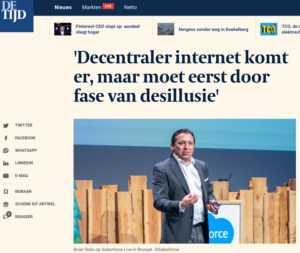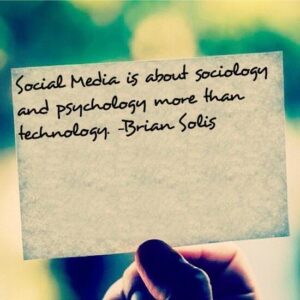
You Like me…you really Like me. Wait. Maybe you don’t really Like me after all. According to our Facebook engagement metrics, only 1% of you actually react when we post. So, to keep the numbers up, our team posts more often, asks questions, runs polls, curates content, introduces more and more contests, and asks for your help to submit your pics and videos as part of our “user-generated” content campaigns. We measure success by the Likes, comments, shares, the number of conversations, and reach. While the Likes are rising, we’re starting to recognize the pattern…I guess we never really defined why you should “Like” us beyond the initial click. We just took for granted that a Like equated to an opt-in.
This general scenario is more common than you may think. That’s all about to change however. Marketers must now rethink their Facebook strategy to define click paths and results. As Josh Constine recently reported, Facebook is now giving advertisers access to its API to improve post-click actions. In his post, Constine walks through a series of various scenarios for brands, developers and also local businesses to take advantage of the new Ads API. Here, we’ll talk more about how to start with strategy.
With the updated Ads API, advertisers must now think beyond the “Like.” Facebook’s Ads API will allow advertisers to present ads most likely to take specific post-click action such as content sharing, in-app purchases, Facebook Offers, among a list of other actions (see below). In the great pursuit of ROI, Facebook is also taking a lot of the guesswork out of ad campaign development and deployment to enhance desired performance. The new improvements give Facebook advertisers an unprecedented opportunity to connect with specific market segments based on intelligence to introduce more informed campaigns that trigger relevant clicks, conversions, and return.

Source: Techcrunch
What does “more informed” actually mean? Facebook is studying the behavior of its consumer population and as it does, it will provide deeper insights to brands seeking specific actions, such as those who are more likely to be a virtual good buyer, someone who actively shares content, who attends events, individuals who appreciate deals and offers. Over time, ads can be optimized for audiences based on this behavior as well. As such, brands must not only compete for attention and clicks, but also context and relevance based on behavior and preferences.
For brands and agencies, advertising based on keywords is no longer good enough. Now that you have a better shot at reaching the right people based on behavior, advertisers must now also become architects of experiences and outcomes.
Now advertisers can specifically optimize for…
1. People talking about this page
2. Page likes
3. Page post likes
4. Page post comments
5. Page post shares
6. @ mentions
7. Check-ins
8. Photo tags
9. Offers shared
10. Offers claimed
11. App installs
12. App used
13. Credit spend events (number of times someone uses credits in the app)
14. Credit spend amount (value of credits that were spent in the app)
15. Number of RSVPs
This is a click to action…
Designing campaigns now require brands and advertisers to think about the “click to action” they want to encourage. I refer to this as the A.R.T. of Engagement, where brands intentionally design campaigns to provoke relevant actions, reactions, and transactions. To take advantage of Facebook’s API, brands must now employ sophisticated advertising approaches that combine segment and contextual research, segment-specific strategies, app and channel development for each approach, UX, creative design, and real-time conversion metrics, review and optimization.
It’s more than Likes or forcing people through Like-gated apps or campaigns. Now it’s about performance and conversion science where…
1) Contextually relevant content appears in front of qualified and desirable audiences that…
2) Triggers a defined, useful action that…
3) Leads to optimized click paths that result in material content or activity, which then…
4) Motivates conversions to preferred outcomes and…
5) Delivers a more integrated, consistent, and efficient experience.
To engage more effectively through Facebook’s social advertising platform requires that all strategies and campaigns commence with a stated purpose. I believe that the best way to outline these scenarios is to begin with the end in mind and work backwards from there. By starting with the end in mind, the ability to research desired behavior and who to reach as a result becomes incredibly clear…and also inspiring.

The dimensions of engagement you’ll need to define are 1) what are you trying to accomplish, 2) what the experience looks/feels like, 3) what benefits you’ll offer and what they mean to the people you’re trying to reach, 4) the desirable outcomes you wish to measure, 5) How people feel as a result of the A.R.T. experiences you evoke, and 6) What the experience will look like in the most prominent channels of your connected customers.
This is why you’re now an architect of experiences and outcomes. It takes vision. It takes design. It takes measurement and optimization. The A.R.T. of Engagement is realized through a Social Experience Framework that starts with intentions and ends with resulting sentiment…not just the outcome.
There’s an old saying, “it’s not the gift that counts, it’s the thought behind it.” The same is true for social advertising, marketing and well, business overall. Intentions count for everything. Therefore your intentions must be realized as experiences where technology serves as the enabler to creatively and contextually engage to create experiences that meet or exceed expectations and ultimately inspire desirable outcomes.
Connect with me: Twitter | LinkedIn | Facebook | Google+
The End of Business as Usual is officially here…
Image Credit: Shutterstock







YES, seems to me we are having to elevate our skills for delivering experiences faster than we can sometimes enjoy what we accomplish right before that. It is not enough to say “Create better content and people will engage with you” — that is a cop-out in my opinion – as most everyone wants to create better content, yet determining what will activate your community/tribe/audience is ever growing and evolving — can you read mercurial!
Focusing on the actions you want you readers to take has always been the impetus to content I have written, yet this ART is being refined and we must refine ourselves in the process. Brian I am wondering if we are at the point where being able to architect ourselves IN the process of architecting the experience is key to creating this successfully.
Michele, indeed…we are no longer marketers, we are experience architects.
Certainly creating a call to action point is very crucial and that’s takes a lot of time to be converted your reader in to the lead and I agree with you that its the ART of Engagement and that’s also increases the authority of yours on internet and readers start believing on you.
Secondly, I think its not only the intentions but how you took steps to do your marketing in a manner that should work for your campaigns.
Thanks
for the post. I have the same opinion regarding the dimensions of engagement necessary
to define as well as the ART of Engagement, where brands deliberately design
campaigns to inflame appropriate actions, reactions, and transactions and helps
you gain faith of the readers as well as fetches you potential traffic.
When I look at current ads on Facebook, they have no relevance, I’m not interested, they are nothing more than banners begging for my attention. Yet on the other hand, apps, and content, are relevant, but I’ve opted into those (great study on eMarketer today BTW).
For all the headlines GM grabbed on Facebook advertising, I really think it comes down to a) relevancy and b) engagement. These are themes central to this post, Brian and clearly, you’ve had an influence on my thinking.
It kills me when I see these ads, and there’s no context, relevance or means to engage. This (relevance) is what Google nailed and Facebook has so many more reasons to do this better, because they know us maybe even better than we know ourselves. We — you and I — are the product, in many ways. So I’m fascinated to read about these optimization strategies; if there’s a killer app, to borrow a phrase from 1.0, this is it.
Nice post. Amazed there are not more comments. This is the good stuff, people!
Frank thank you for thoughtful comment. Thought about you on Veterans day. You’re right. This article shared how GM and other brands should start thinking about Advertising and New Engagement strategies. It takes a different approach. I also evaluated the company’s Earned and Shared strategies and wrote a post about that as well. Comes out this coming week on HBR. Let’s get more comments!
Great points you got there. Yes, it goes beyond that first click on the “Like” button.
This is great stuff, indeed.
I for one would love to acutally see one of these plans “where brands intentionally design campaigns to provoke relevant actions, reactions, and transactions.”
What does it look like on the planning table for the little company?
If an acutal plan is not available then what is a specific example? What brand designed what campaign to provoke which relevant actions, reaction and transactions?
I can always wrap my head around designing the optimal experience for real life situations like walking in the front door of a retail space and what happens from there, but with all the new options regarding social media channels, I have a hard time changing focus.
Could you walk us through and acutal campaign with real life goals, strategies and tactics and include outcomes?
Cheers,
Sarah
Great article. Has really made me think about Facebook strategy. ‘Likes’ have for a long time been misused and misinterpreted by most. It never really told you anything and presents itself as an immediate reaction rather than any engagement or connection with a brand.
As others have mentioned Facebook Ads have been second level quality in the way they match with behaviour and content. It seems the new approach will be a win-win for the consumer and the advertiser and that is what everyone has been striving for since the dawn of time.
We use these platforms to share experiences – common or not – and as human beings are always drawn to something that appeals to this.
This doesn’t mean I know the answers to our Facebook conundrums but with this post, and the information provided, direction and strategy can become clearer.